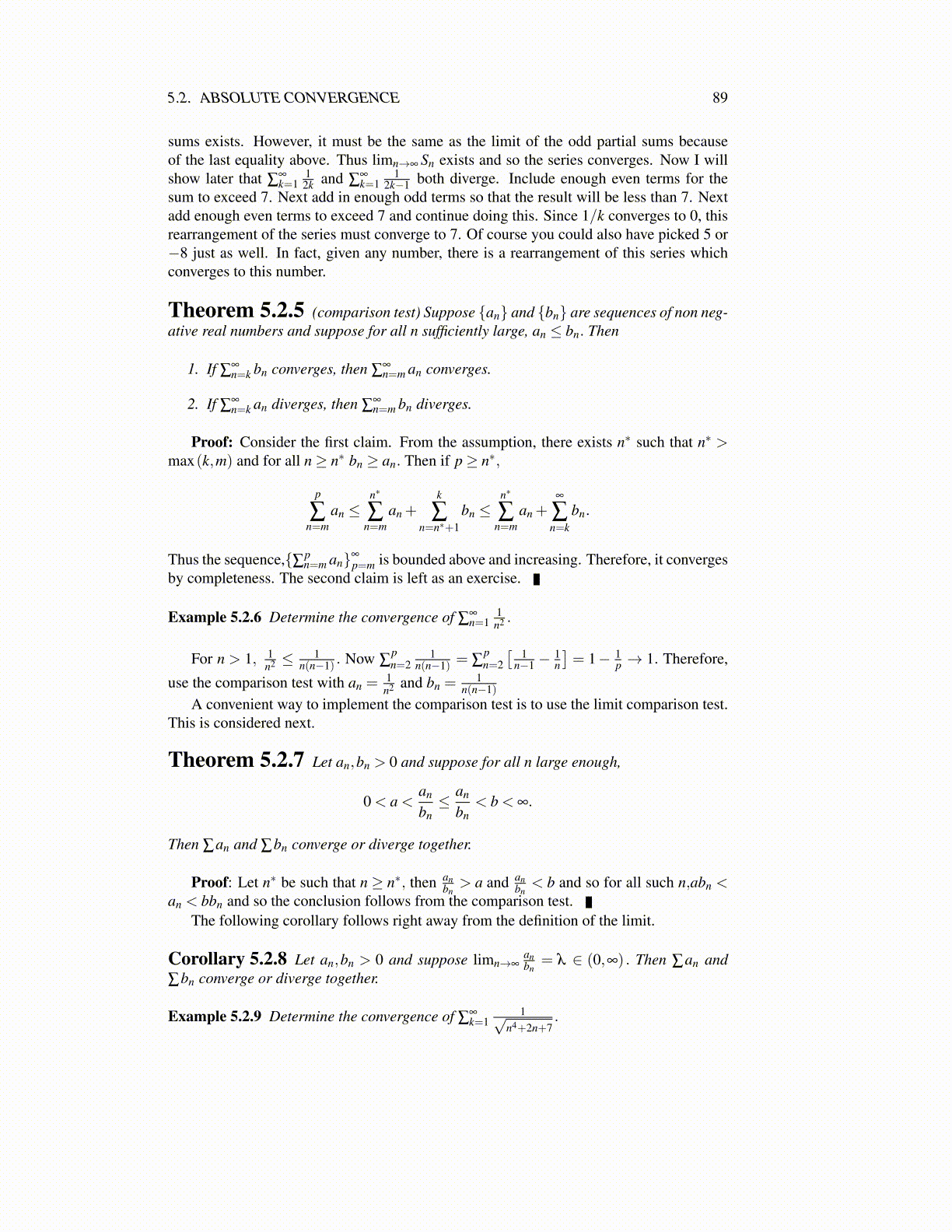
5.3. EXERCISES 89
Example 5.2.12 Determine the convergence of ∑∞k=1
1√n2+100n
.
Use the limit comparison test. limn→∞
( 1n )(1√
n2+100n
) = 1 and so this series diverges along
with ∑∞k=1
1k .
Sometimes it is good to be able to say a series does not converge. The nth term testgives such a condition which is sufficient for this. It is really a corollary of Theorem 5.1.7.
Theorem 5.2.13 If ∑∞n=m an converges, then limn→∞ an = 0.
Proof: Apply Theorem 5.1.7 to conclude that limn→∞ an = limn→∞ ∑nk=n ak = 0.
It is very important to observe that this theorem goes only in one direction. That is,you cannot conclude the series converges if limn→∞ an = 0. If this happens, you don’tknow anything from this information. Recall limn→∞ n−1 = 0 but ∑
∞n=1 n−1 diverges. The
following picture is descriptive of the situation.
∑an converges
liman = 0
an = n−1
5.3 Exercises1. Determine whether the following series converge and give reasons for your answers.
(a) ∑∞n=1
1√n2+n+1
(b) ∑∞n=1(√
n+1−√
n)
(c) ∑∞n=1
(n!)2
(2n)!
(d) ∑∞n=1
(2n)!(n!)2
(e) ∑∞n=1
12n+2
(f) ∑∞n=1( n
n+1
)n
(g) ∑∞n=1( n
n+1
)n2
2. Determine whether the following series converge and give reasons for your answers.
(a) ∑∞n=1
2n+nn2n
(b) ∑∞n=1
2n+nn22n
(c) ∑∞n=1
n2n+1
(d) ∑∞n=1
n100
1.01n
3. Find the exact values of the following infinite series if they converge.
(a) ∑∞k=3
1k(k−2)
(b) ∑∞k=1
1k(k+1)
(c) ∑∞k=3
1(k+1)(k−2)
(d) ∑Nk=1
(1√k− 1√
k+1
)4. Suppose ∑
∞k=1 ak converges and each ak ≥ 0. Does it follow that ∑
∞k=1 a2
k also con-verges?